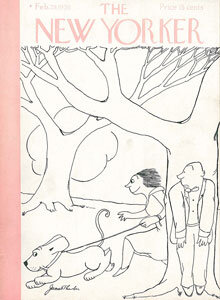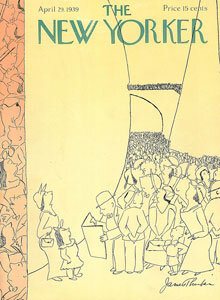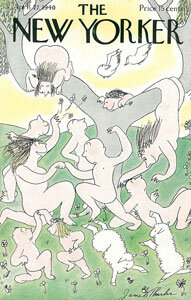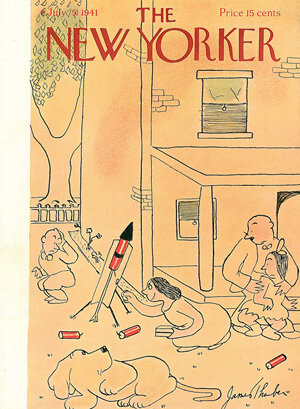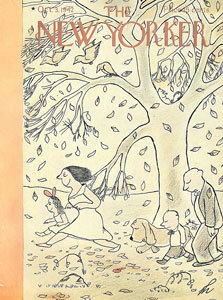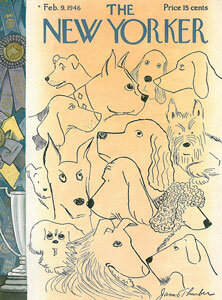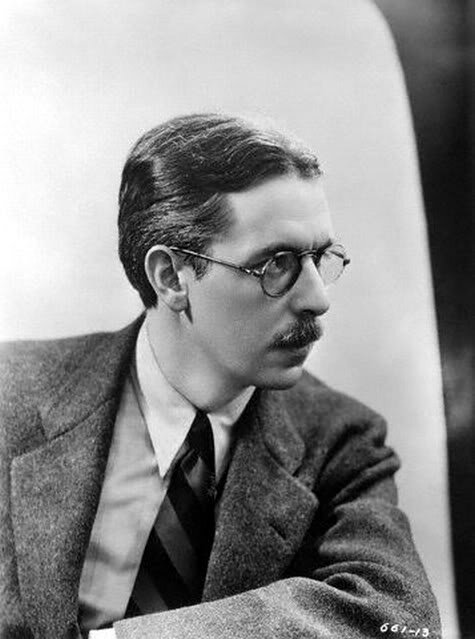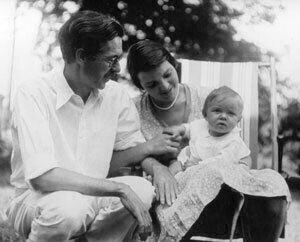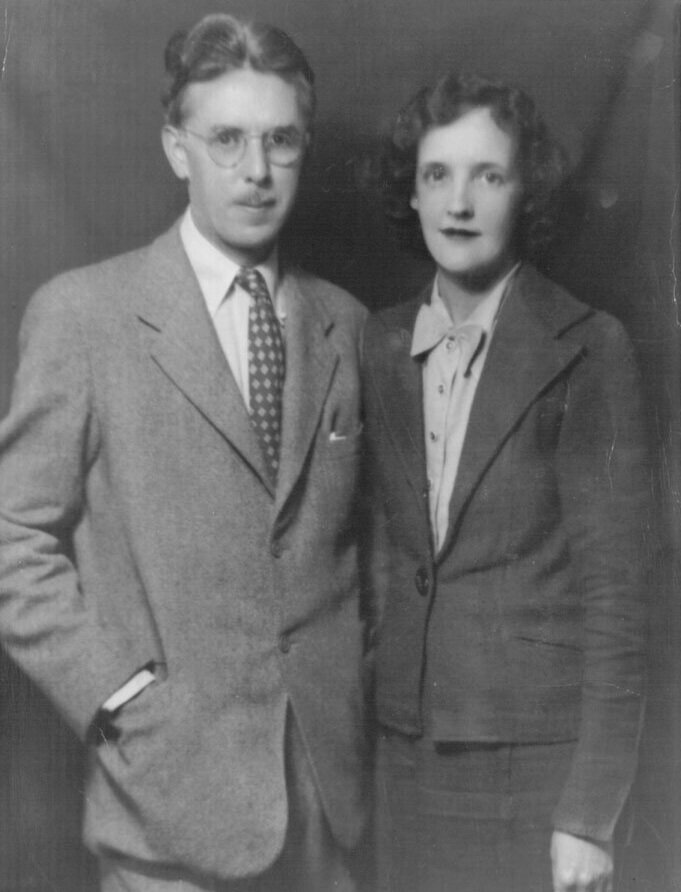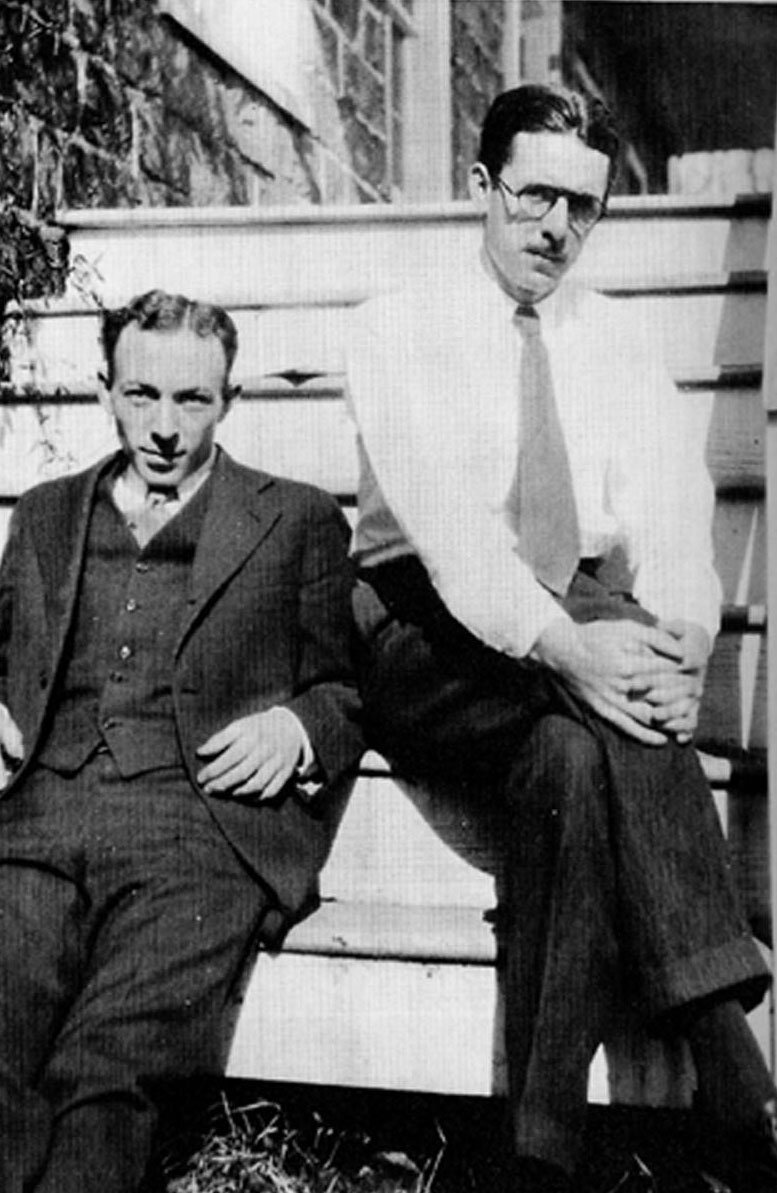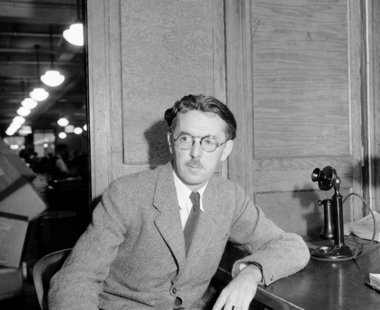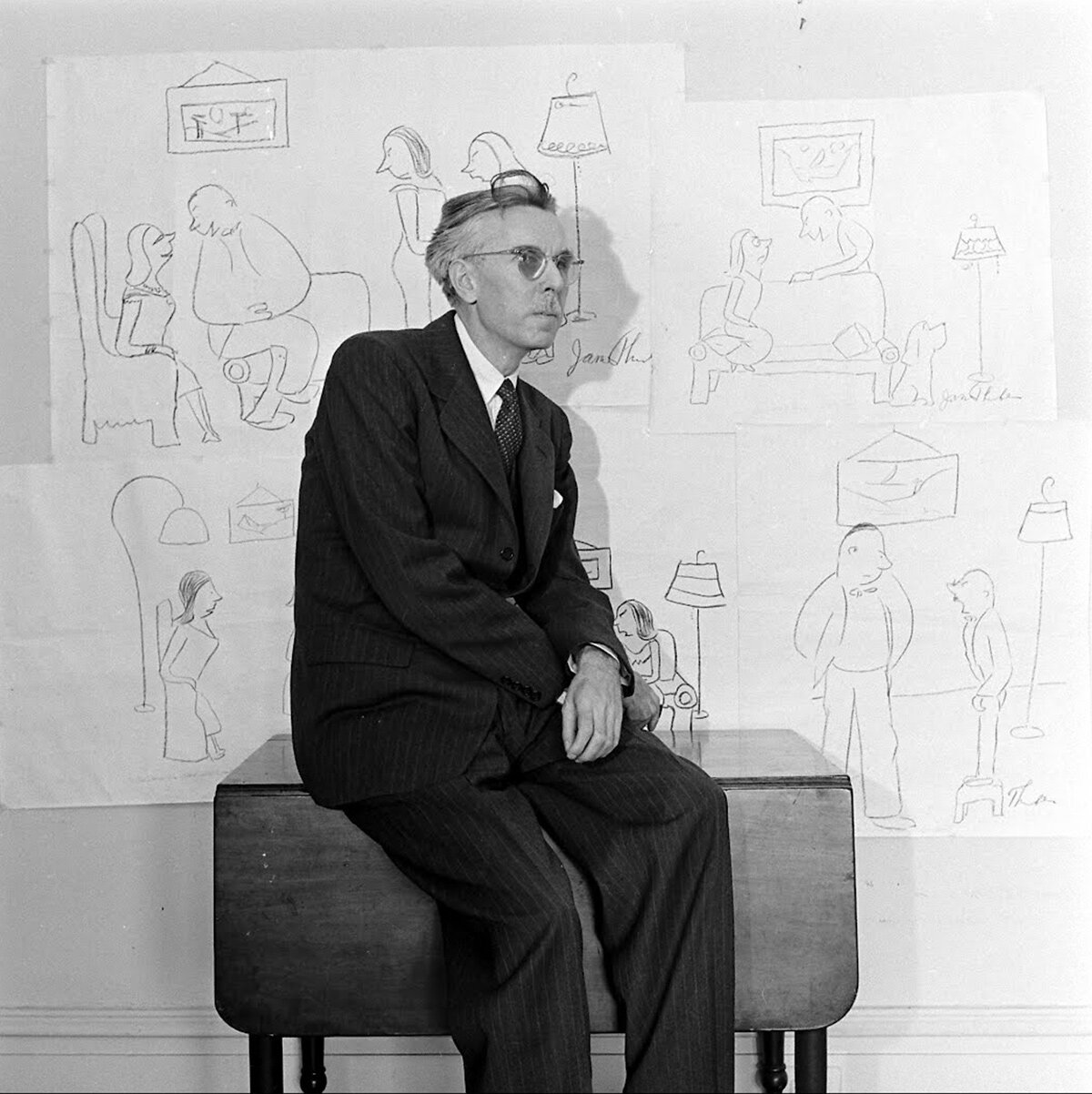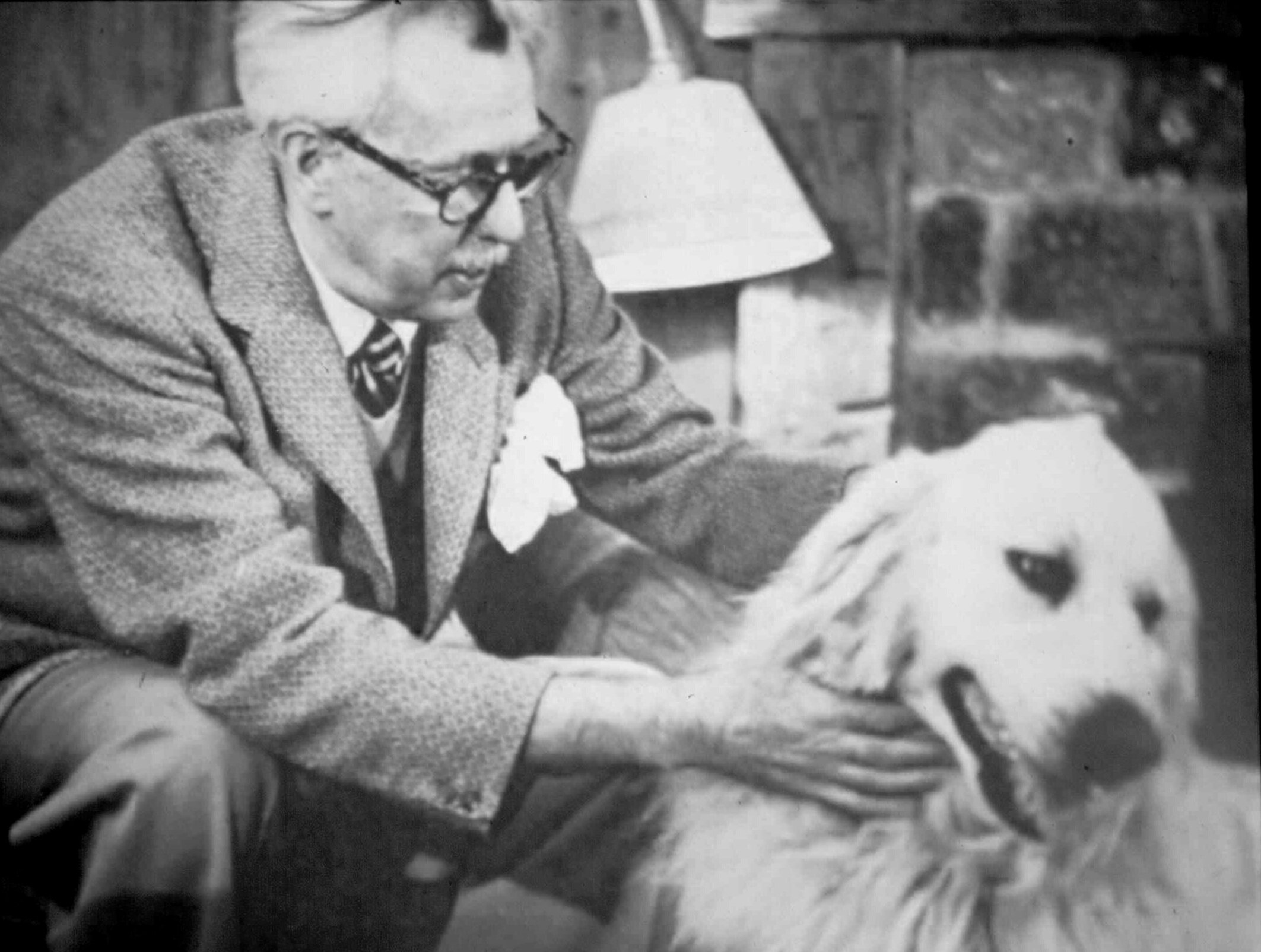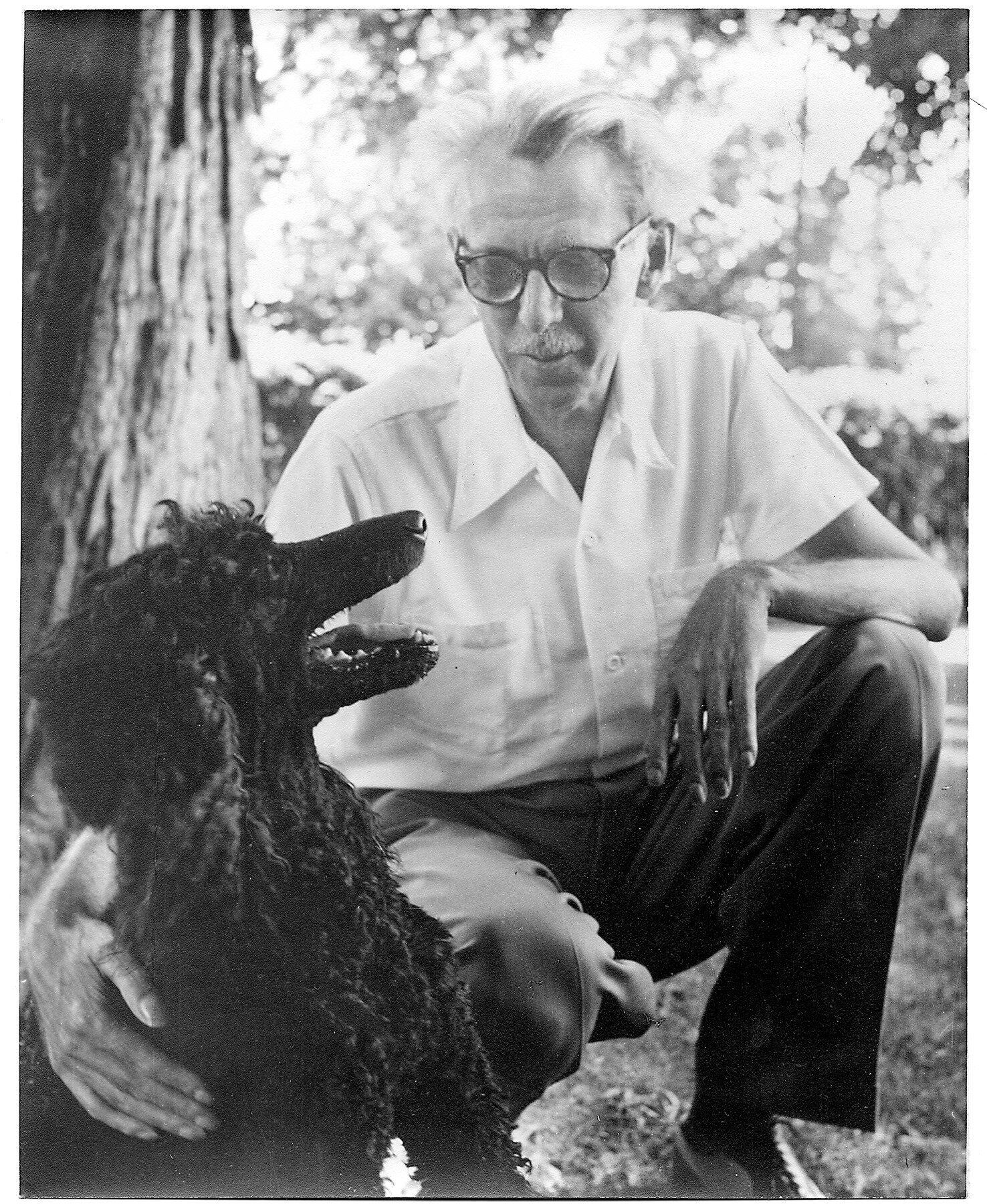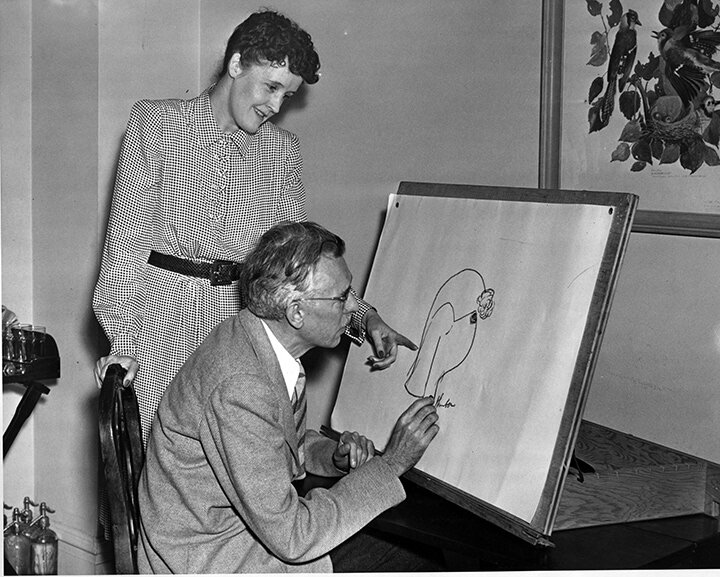ABOUT JAMES THURBER
James Thurber was a humorist, cartoonist, author, playwright, and journalist known for his quirky and relatable characters and themes. One of the foremost American humorists of the 20th century, his inimitable wit and pithy prose spanned a breadth of mediums and genres, including short stories, illustrations, modern commentary, fables, children's fantasy, and letters. Many of Thurber’s drawings and stories first appeared in The New Yorker.
Some of James Thurber’s famous tales include “The Secret Life of Walter Mitty,” “The Night the Ghost Got In,” “The Dog That Bit People,” “The Night the Bed Fell,” “The Catbird Seat,” “The Day the Dam Broke,” and “The Unicorn in the Garden.” Thurber’s drawings often feature dogs and family life.
NAVIGATE
‣ A Timeline of James Thurber’s Life and Career
‣ A Brief Biography
James Grover Thurber was born in Columbus, Ohio on December 8, 1894 to Mary Agnes “Mame” Fisher and Charles Leander Thurber. Thurber's father, Charles, was a civil clerk whose frequent job changes moved the Thurber family from house to house during Thurber’s childhood, mostly on the east side of Columbus. Thurber’s mother, Mame, was a force of personality and a brilliant humorist in her own right. Her jokes and theatrics influenced and were immortalized in many Thurber stories and characters.
Thurber had two brothers: an older brother, William, and a younger brother, Robert. A year older than James, William had a talent for drawing, while Robert was the athlete of the family and a star baseball player.
Mame and Charles Thurber
© The Thurber Estate
Young Thurber Brothers (Circa 1900)
© The Thurber Estate
One of the defining moments in Thurber’s life occurred during a childhood game of “William Tell” when the family was living near Washington, D.C. As part of the game, seven-year-old James turned around and waited for his brother William to shoot at him with a blunt arrow. Convinced that his brother was taking too long, Thurber turned back around and his brother accidentally shot him in his left eye. Irreversibly blinded, the eye was replaced with a prosthetic. Throughout Thurber’s life, he gradually lost vision in his remaining eye due to a condition called sympathetic ophthalmia—but that never stopped him from writing or drawing.
“Last night I dreamed of a small consolation enjoyed only by the blind: Nobody knows the trouble I've not seen!”
Thurber Family (Circa 1915)
© The Thurber Estate
After the Thurber family’s brief move to Washington, D.C., they returned to Columbus, where Thurber attended Sullivant Elementary School and Douglas Junior High School, before graduating from East High School in 1913.
From 1913–1918, Thurber attended The Ohio State University, where he wrote for the college paper, The Lantern, and was editor-in-chief of The Sun Dial humor and literary magazine. After the encouragement of friend Elliott Nugent, Thurber joined the Phi Kappa Psi fraternity. It was at this time that the Thurbers rented the house at 77 Jefferson Avenue (which became Thurber House in 1984). Due to his partial blindness, Thurber was not able to complete a compulsory ROTC course and couldn’t graduate from OSU—although the university gave him a posthumous honorary degree many years later, in 1995.
After college, Thurber worked as a code clerk for the State Department in Washington, D.C., and later at the American Embassy in Paris, France. He returned to Columbus in 1920 and joined The Columbus Dispatch as a reporter. During his stint at the Dispatch, Thurber covered stories such as the opening of Ohio Stadium, and for a time had his own column called “Credos and Curios.” Thurber spent his evenings working on skits for the Strollers and Scarlet Mask theatre groups at Ohio State—where he met his first wife, Althea Adams. The young couple married in Columbus in 1922 and moved to Paris in 1925, where Thurber started work on the Paris edition of the Chicago Tribune.
“Art — the one achievement of man which has made the long trip up from all fours seem well advised.”
Young James Thurber
© The Thurber Estate
Althea Adams and James Thurber
© The Thurber Estate
The Sun Dial Humor and Literary Magazine
© The Thurber Estate
After stretching their francs as far as they could, the Thurbers moved to New York in 1926 and Thurber began his career as a freelance writer while working for the New York Evening Post. Soon after, Thurber’s friend, E.B. White (author of Stuart Little, Charlotte’s Web, and other beloved books) introduced Thurber to Harold Ross, editor at The New Yorker. Ross immediately hired Thurber.
White and Thurber shared an office at The New Yorker. One day, White found some of Thurber’s drawings in a trash can and submitted them to The New Yorker for publication. This began Thurber’s decades-long career contributing drawings and writing to The New Yorker. Soon after, Thurber and White collaborated on their first book, Is Sex Necessary?, featuring a number of Thurber’s cartoons. Following the book’s publication, Thurber’s cartoons were featured regularly in The New Yorker, and he drew the cover art six times. Thurber left his staff position at The New Yorker in 1935, but continued to submit cartoons and stories.
“Some people thought my drawings were done under water; others that they were done by moonlight. But mothers thought that I was a little child or that my drawings were done by my granddaughter. So they sent in their own children’s drawings to The New Yorker, and I was told to write these ladies, and I would write them all the same letter: 'Your son can certainly draw as well as I can. The only trouble is he hasn’t been through as much.’”
James and Althea Thurber’s daughter Rosemary was born in 1931. After several years of marital conflict, Thurber and Althea divorced in 1935. Thurber married Helen Wismer later that year. She convinced Thurber to leave New York and move to Connecticut after they married. Helen was Thurber’s editor and business manager, as well as his wife and caretaker, until his death.
Thurber spent much time in and about the Algonquin Hotel in New York City. Though never a formal member of the Algonquin Round Table, he was a favorite among many of its members, including Dorothy Parker and Robert Benchley. Helen and James would stay in the Algonquin Hotel when visiting New York after they moved to Connecticut.
Muggs, “The Dog That Bit People”
© The Thurber Estate
Thurber had a great love of dogs of all shapes and sizes. He even dedicated Is Sex Necessary? to two of his favorite terriers. Thurber included dogs in many of his drawings, saying that dogs represent balance, serenity, and are a "sound creature in a crazy world." One of Thurber’s most memorable dogs was an airedale terrier named Muggs, affectionately known as “The Dog That Bit People.” James’s mother Mame would bake treats every Christmas for all of the people Muggs bit—including the lieutenant governor!
As Thurber’s vision worsened later in his life, he used a magnifier called a Zeiss loupe to continue drawing on large sheets of paper. Thurber was also able to keep writing with the help of a transcriber. He had a miraculous ability to create and edit up to 2,000 words in his head at a time, which he would then dictate to be recorded on paper.
“The dog has got more fun out of Man than Man has got out of the dog, for the clearly demonstrable reason that Man is the more laughable of the two animals.”
After talking for years about writing a play together, Thurber and fellow Phi Kappa Psi brother, Elliott Nugent, collaborated in 1940 on a comedy play called The Male Animal. The play became a Broadway hit and was such a success that it was turned into a movie in 1942 starring Henry Fonda and Olivia de Havilland.
In 1947, Thurber’s short story, “The Secret Life of Walter Mitty,” was adapted into a feature film starring Danny Kaye, Virginia Mayo, Boris Karloff, and others. In 1960, A Thurber Carnival, a play based on Thurber’s 1945 book The Thurber Carnival and directed by Burgess Meredith, opened on Broadway. Thurber portrayed himself in 88 performances and won a Tony Award for the adapted script.
Thurber wrote dozens of books over the course of his life, including Is Sex Necessary? (1929), My Life and Hard Times (1933), The Last Flower (1939), Fables for Our Time (1940), My World and Welcome To It (1942), Many Moons (1943), The Thurber Carnival (1945), The White Deer (1945), The 13 Clocks (1950), The Thurber Album (1952), Further Fables for Our Time (1956), The Wonderful O (1957), and The Years with Ross (1959).
A Thurber Carnival Poster (1960)
© The Thurber Estate
James Thurber
© The Thurber Estate
“With sixty staring me in the face, I have developed inflammation of the sentence structure and definite hardening of the paragraphs.”
In the final year of his life, James Thurber’s behavior became erratic, partly from ongoing struggles with a thyroid condition. He was stricken with a blood clot in his brain in October 1961. Although Thurber underwent a successful surgery, he died on November 2, 1961 due to complications from pneumonia. He was a month shy of his 67th birthday.
James Thurber passed away in New York City, but his ashes are interred in Green Lawn Cemetery in his hometown of Columbus, Ohio. The GPS/Google Maps coordinates for Thurber's grave are N 39° 56.323 W 083° 01.980. Humans and canines are always welcome to visit.
Thurber’s Grave in Columbus (Plot 50)
© Thurber House
James Thurber
© The Thurber Estate








